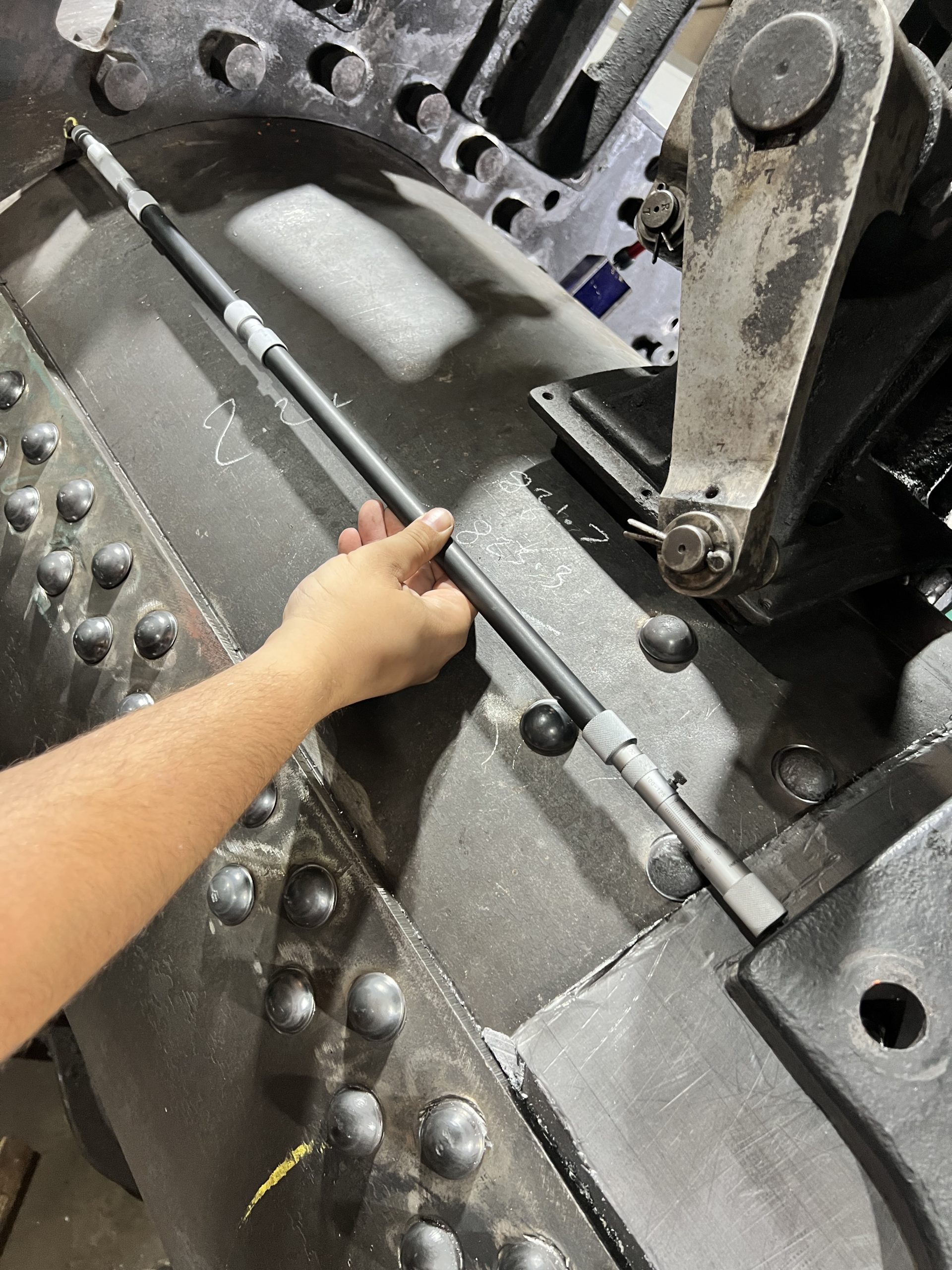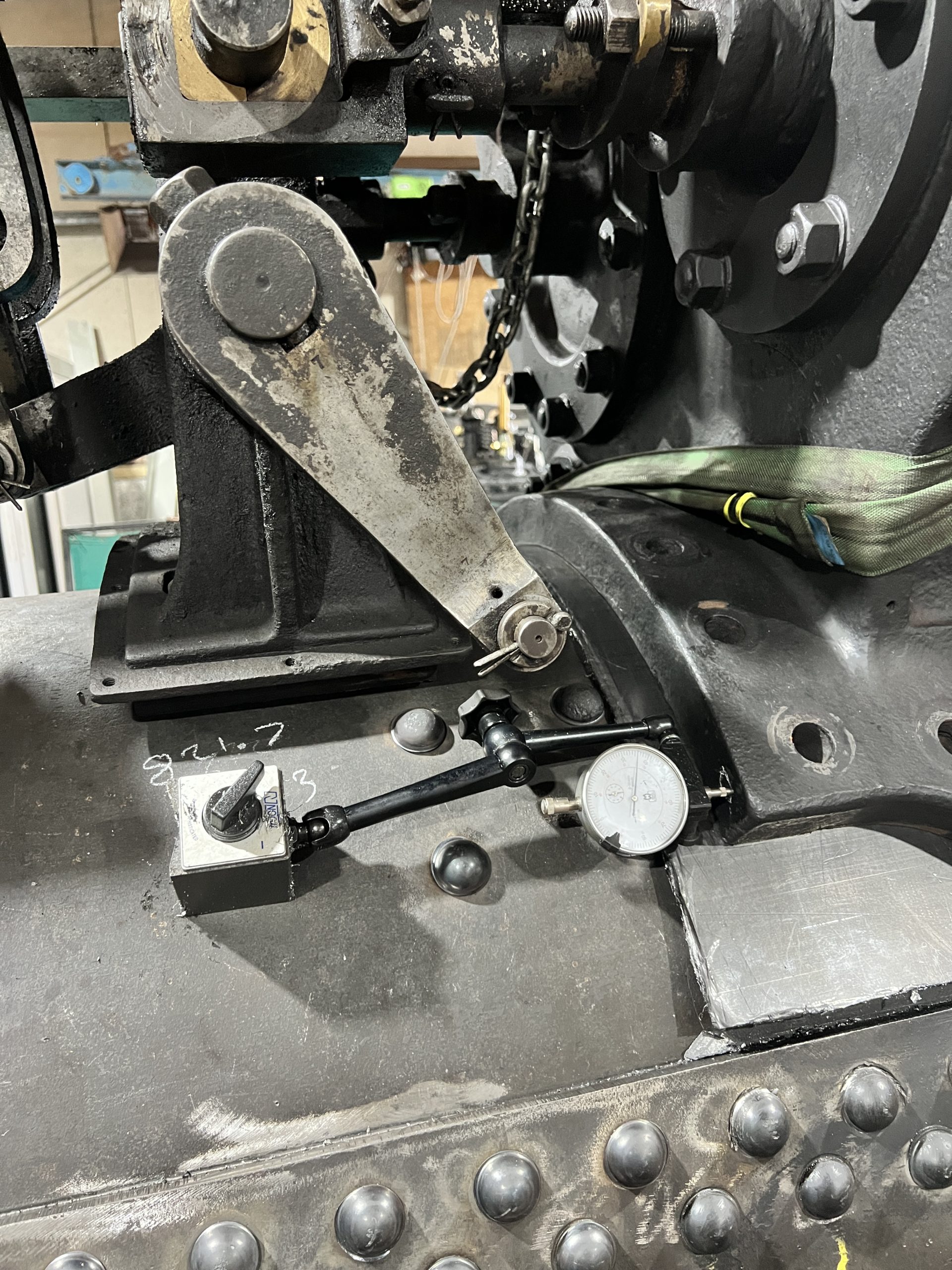Precision engineering – Aligning a cylinder block accurately back to how it was assembled in 1917
Just because a steam engine was built 100 years ago, it doesn’t mean that when they were built there was no precision engineering. When an engines in for significant boiler work, we use a variety of methods to ensure that it all goes back exactly as it came in. Precision engineering comes into place to ensure any issues post boiler work are minimised. As a rule we like to see the engine in operation prior to strip so that any issues can be noted prior to stripping.
These involve:
- Jigs – Custom jigs made to ensure critical points are taken.
- Dimensions – Using precision measurement equipment various dimensions are taken to all checking once the engine starts going back together. It is important to mark exactly where these measurements are been taken as castings etc vary in thickness and cannot be relied on to be perpendicular.
- Angular alignment – using high precision digital levels, readings are taken at various points to ensure that everything goes back in the correct plane.
With all these checks in place, when it comes to bringing an engine back to life, any adjustments then are minor.
Here is the internal micrometer we are using in the picture. We took readings when the engine came to pieces and then the same when it goes back together. Once we have a reading, we then set up clocks on each side to allow us to adjust accurately without the need for constant remeasurement. We’re aiming to get it as close to the original measurements as possible and achieve within fractions of a millimetre. Any minor adjustments can then be made when rebuilding the engine. Who said that precision engineering is new – these engines were made to very accurate tolerances. It can be seen when measuring components and finding them to be with 0.001″ of size.
JE&T – Precision Engineering
We complete all work from boiler work to machining. We have apprentice time served engineers who have worked on anything from a Victorian steam engine to the latest gas turbine technology and everything in-between.
We try to complete everything in house to keep full control of timescales and quality. We are continually investing in new machinery to allow us to have everything on hand that’s required.
Victorian Precision Engineering
During the Victorian era (1837-1901), precision engineering was a rapidly developing field, driven by advancements in technology, industry, and science. Victorian precision engineers played a crucial role in shaping the industrial landscape and developing innovations that laid the foundation for modern engineering practices. Some notable areas and figures in Victorian precision engineering include:
- Steam Engines and Locomotives:
- Isambard Kingdom Brunel: An iconic engineer known for his innovative work in railway and bridge construction, including the Great Western Railway and the Clifton Suspension Bridge.
- George Stephenson: Often referred to as the “Father of Railways,” he is famous for designing the first successful steam-powered locomotive and pioneering railway systems.
- Machine Tools:
- Joseph Whitworth: A leading figure in precision engineering, he standardized screw thread measurements, introduced accurate measurement techniques, and developed precision machine tools.
- Henry Maudslay: Known for his improvements to machine tool technology, he developed the screw-cutting lathe and contributed to the development of the steam engine and other machinery.
- Telegraph and Communication:
- Charles Wheatstone: Contributed to the development of electrical telegraphy and is known for his work on the Wheatstone bridge, which measures electrical resistance.
- William Thomson (Lord Kelvin): Known for his work in telegraphy, thermodynamics, and electricity, including the Kelvin scale for temperature measurement.
- Clocks and Watches:
- John Harrison: Though predating the Victorian era, his work on marine chronometers was influential in navigation and timekeeping precision.
- Textile Machinery:
- Richard Roberts: An inventor and engineer who contributed to the development of textile machinery, including improvements to power looms.
- Optical Instruments:
- George Airy: An astronomer and mathematician who made significant contributions to optics and designed the Airy disk, a pattern of light seen in telescopes.
These engineers and many others of the Victorian era played pivotal roles in the development of precision engineering techniques and tools. Their innovations laid the groundwork for modern engineering practices, which continue to evolve and shape the world today


